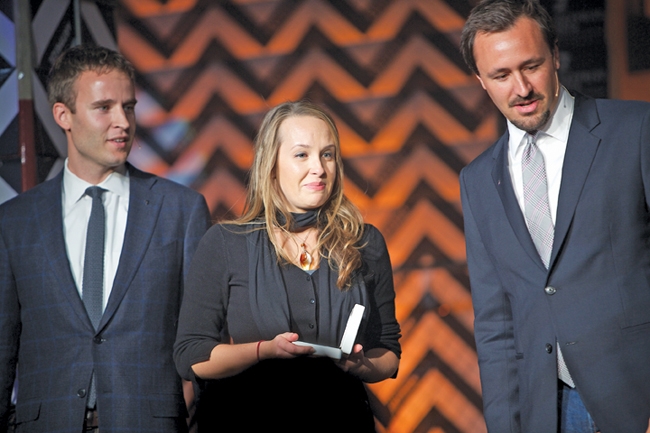2013 marks the fifth year of ArtPrize, the "radically open, independently organized international art competition" that presents the winner with the largest prize in history of art prizes. Each of the four first prize winners have walked away with racks on racks on racks – $200,000 to be exact – and the satisfaction of knowing their work struck a chord with the Joe the Art Critic.
But then what? Does a fate akin the "Curse of the Lottery" befall them and their families? Do they become fixtures in Chelsea galleries dancing with Jay-Z and Marina Abramovic? Or maybe they've been confined to the basement tunnels of the Amway Grand Plaza, contracted to produce miniature replicas of their works in preparation for Rob Bliss's next urban experiment – or not.
All four of the previous winners seemed to have gone back to business as usual, though in the case of Adonna Khare, her studio's a bit bigger.
"I finally have a studio that is not my garage," said the former school teacher, whose 288-square-foot, penciled mural "Elephants" took home the 2012 grand prize.
She said having the new space makes her process of creating her towering pieces much easier.
"I can step back, instead of always thinking about what it's going to look like."
Khare is based in California and now creates work full-time.
Chris LaPorte, who won in 2010 with his larger-than-life pencil drawing "Cavalry," has remained in his teaching position at his alma mater Aquinas College in addition to creating new work, including 2012 ArtPrize tenth-place winner "City Band."
LaPorte admits he's never been a "starving artist," his first lucrative art dealings came to him while drawing caricatures at Cedar Point.
"I made the kind of funds that paid for my next year of college in just one summer," he said. "It gave me the confidence to know that, no matter what, I can make a living drawing, somehow."
"Cavalry" is now a part of the ArtPrize permanent collection and is housed in the Grace Hauenstein Library on the campus of Aquinas College. LaPorte has said that the work was largely inspired by his father's unexpected death in 2009 and that the tragedy continues to push him to create.
"Do I want to make something or do I want to put it off some more? I try to push myself to take advantage of the time I have."
2011 winner Mia Tavonatti also knows the power of pain as a motivator. This past May, she was diagnosed with a brain tumor and said she has spent most of her time since in recovery.
"Going through something like that really makes you take stock of everything," said the Iron Mountain, Mich. native.
"My recovery has been phenomenal, I'm getting back up to speed – I'm almost there."
Tavonatti started the Svelata Foundation, an organization that aims to expose the creative processes of as many artists as possible by sponsoring artists and projects that "inspire and transform."
She said right now she is "swamped" working on the latest installment of the "Power of Words Project," which allows communities to vote on one word that best describes the place's collective future and then assists artists, students and community members in creating a mural to represent it.
Tavonatti will return to her hometown this month to begin work on the piece that will aim to express the word the community selected: believe.
As for Brooklyn-based artist Ran Ortner, the inaugural ArtPrize champion, who transfixed the masses with his "Open Water #24," drawing acclaim for how his painting looked "soooo real," – he could not be reached for comment. According to his website, he is still exploring the Earth's most bountiful and beautiful resource in a studio in Brooklyn, though now he has many more assistants.
Pictured: Adonna Khare receiving last year’s top prize from Rick Devos





